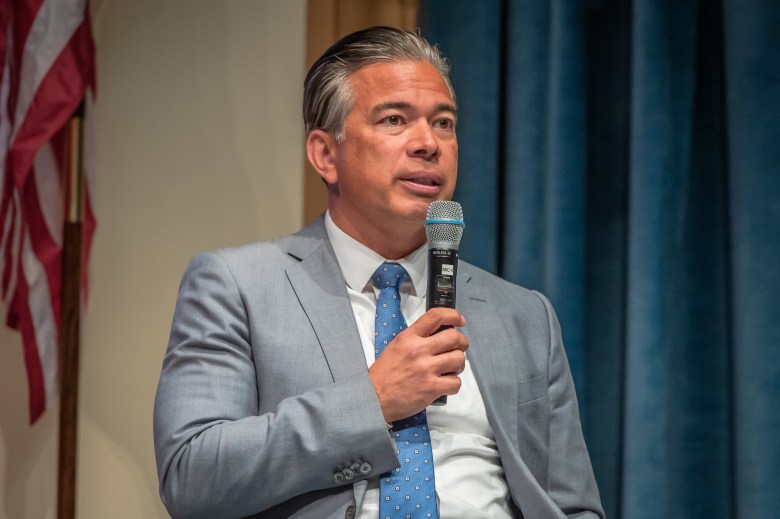Morning Report: Why Affordable Housing Projects Cost so Damn Much to Build
Morning Report: Why Affordable Housing Projects Cost so Damn Much to Build Voice of San Diego


Sustainable Development Goals (SDGs)
Goal 11: Sustainable Cities and Communities
The price tag for affordable housing projects can be eye-popping – over the past couple of years, new projects reviewed by the San Diego Housing Commission cost $574,000 per unit on average. One project in Rancho Bernardo was almost double that, at nearly $911,000 per unit.
But … why?
Lisa Halverstadt dove deep into the affordable housing trenches to break down why costs ballooned at five of the most expensive affordable housing developments in the pipeline, and how affordable housing developers are paying for it. What she found is that many of the agencies that fund affordable housing require or incentivize added amenities that drive up costs considerably.
- Extra parking spaces
- Commercial facilities
- Water and sewer upgrades
But so do increasing costs for supplies and requirements to employ higher-paid union workers for construction.
Big News for the Builder’s Remedy

The builder’s remedy, one of California’s most controversial housing laws, could be getting some significant updates.
California Attorney General Rob Bonta and Assemblymember Buffy Wicks announced a bill Tuesday that not only endorses the builder’s remedy, but aims to make it clearer and more enforceable.
The builder’s remedy says if a city doesn’t have a compliant housing element, the city can’t use its zoning code or general plan to deny an affordable housing project. A housing element is a state-required plan outlining how a city can accommodate enough new housing to meet its population’s needs.
In other words, if a city is slacking on its housing plan, developers can use the builder’s remedy to get their housing projects approved regardless of the city’s zoning rules.
But even though the builder’s remedy has been around since 1990, no project has ever broken ground using the law.
AB 1893 seeks to clear up some of the law’s ambiguities, add a new streamlining provision and basically reduce the potential for litigation and disputes that come from builder’s remedy projects.
Song of the Week
It would be hard to find a song that’s come out of San Diego that’s had a larger cultural footprint than “Angel Baby.” The swooning doo-wop track was released by Rosie and the Originals and was penned by Rosalie “Rosie” Hamlin.
In the six decades since its release, “Angel Baby,” has been covered by the likes of Linda Ronstadt, John Lennon, and Charles Brown. It’s a true classic. Last week marked the seven-year anniversary of Hamlin’s death, so it seems fitting to remember her brief, but profound, musical legacy that led to her becoming the first Latina inducted into the Rock and Roll Hall of Fame.
Rosie and the Originals, “Lonely Blue Nights”: “Lonely Blue Nights,” is more polished than the rough-around-the-edges “Angel Baby,” but carries just as much emotional weight. On the track, Hamlin croons about a love lost and begs for a second chance over the gentle plunks of a piano and guitar.
Read more about the song of the week here.
Like what you hear? Check out the entire “The Best of Rosie and the Originals,” compilation released in 1999.
Do you have a “Song of the Week” suggestion? Shoot us an email and a sentence or two about why you’ve been bumping this song lately. Friendly reminder: all songs should be by local artists.
In Other News
The Morning Report was written by Jakob McWhinney and Tigist Layne. It was edited by Andrea Lopez-Villafaña.
SDGs, Targets, and Indicators Analysis
1. Which SDGs are addressed or connected to the issues highlighted in the article?
- SDG 11: Sustainable Cities and Communities
The article discusses the high costs of affordable housing projects and the factors that contribute to these costs. This issue is directly related to SDG 11, which aims to make cities and human settlements inclusive, safe, resilient, and sustainable.
2. What specific targets under those SDGs can be identified based on the article’s content?
- Target 11.1: By 2030, ensure access for all to adequate, safe, and affordable housing and basic services and upgrade slums.
The article highlights the challenges in providing affordable housing and mentions the high costs of affordable housing projects. Target 11.1 specifically addresses the need to ensure access to adequate, safe, and affordable housing for all.
3. Are there any indicators mentioned or implied in the article that can be used to measure progress towards the identified targets?
- Indicator 11.1.1: Proportion of urban population living in slums, informal settlements, or inadequate housing.
- Indicator 11.1.2: Proportion of population that has convenient access to public transport, by sex, age, and persons with disabilities.
The article mentions the high costs of affordable housing projects and the challenges in providing affordable housing. These issues are indicators of inadequate housing and can be used to measure progress towards Target 11.1.1. The article also mentions the need for additional parking spaces and water and sewer upgrades, which are indicators of convenient access to public transport and basic services, respectively, and can be used to measure progress towards Indicator 11.1.2.
Table: SDGs, Targets, and Indicators
| SDGs | Targets | Indicators |
|---|---|---|
| SDG 11: Sustainable Cities and Communities | Target 11.1: By 2030, ensure access for all to adequate, safe, and affordable housing and basic services and upgrade slums. | Indicator 11.1.1: Proportion of urban population living in slums, informal settlements, or inadequate housing. Indicator 11.1.2: Proportion of population that has convenient access to public transport, by sex, age, and persons with disabilities. |
Behold! This splendid article springs forth from the wellspring of knowledge, shaped by a wondrous proprietary AI technology that delved into a vast ocean of data, illuminating the path towards the Sustainable Development Goals. Remember that all rights are reserved by SDG Investors LLC, empowering us to champion progress together.
Source: voiceofsandiego.org

Join us, as fellow seekers of change, on a transformative journey at https://sdgtalks.ai/welcome, where you can become a member and actively contribute to shaping a brighter future.







